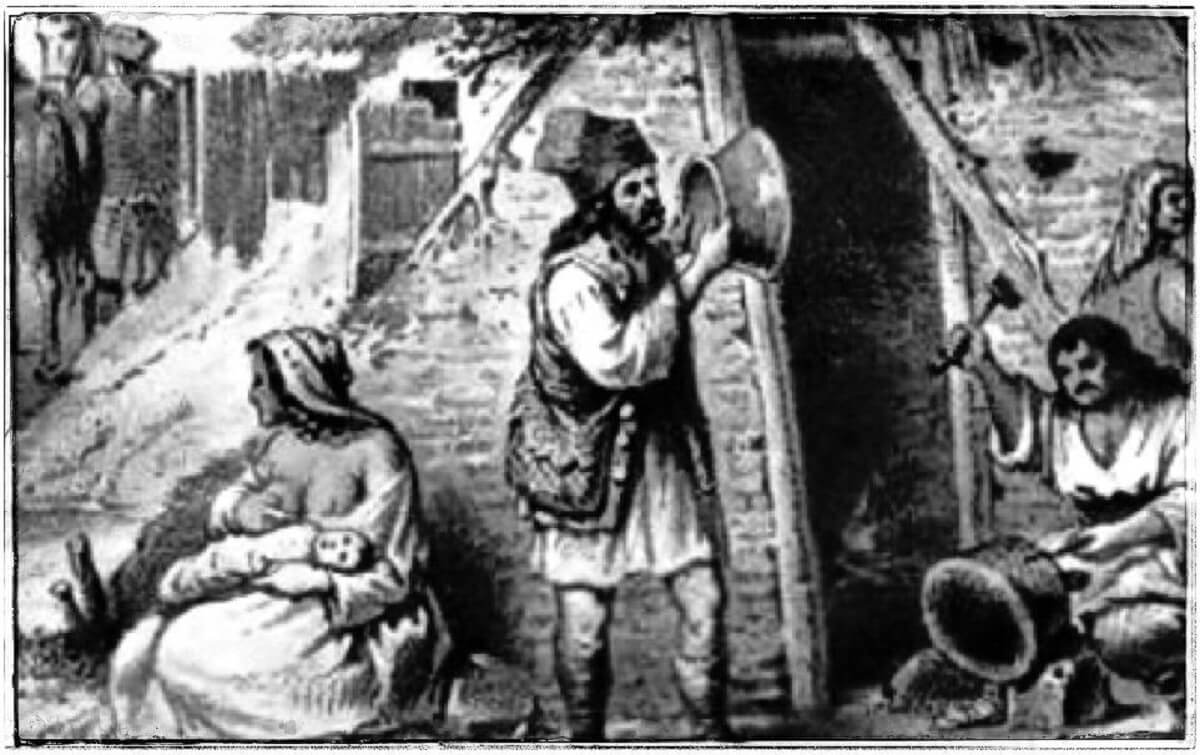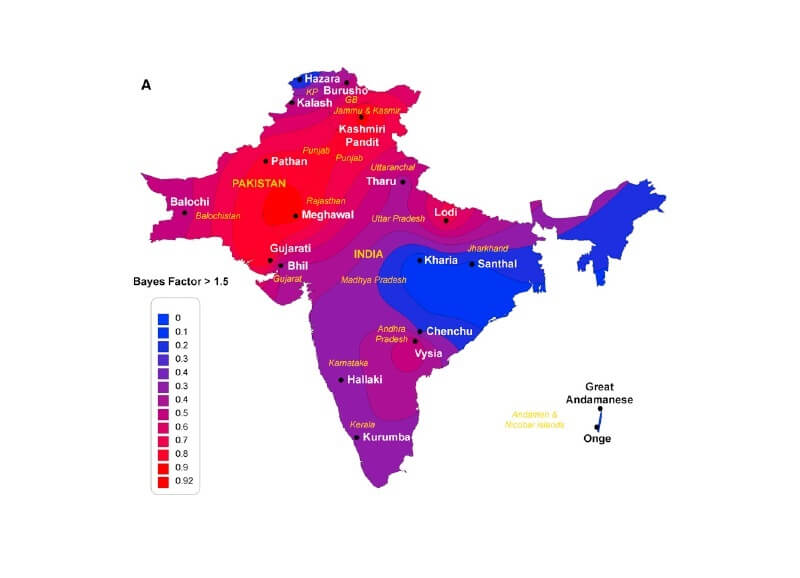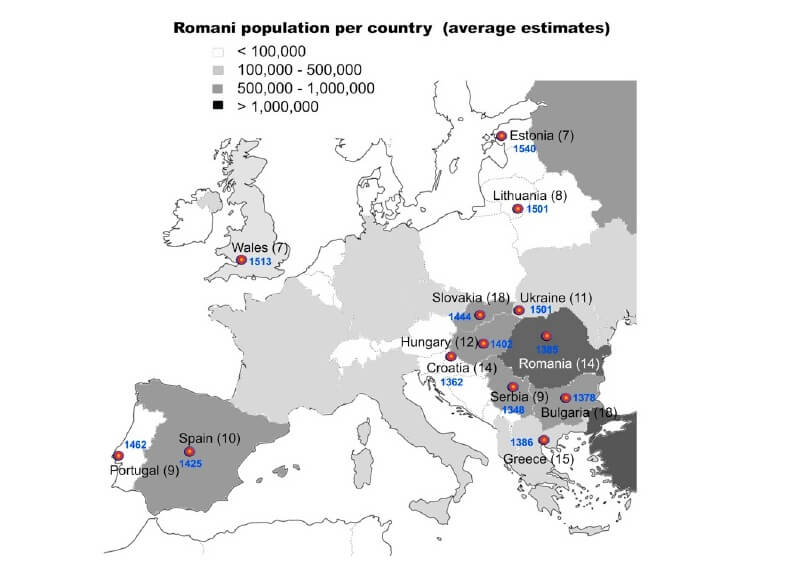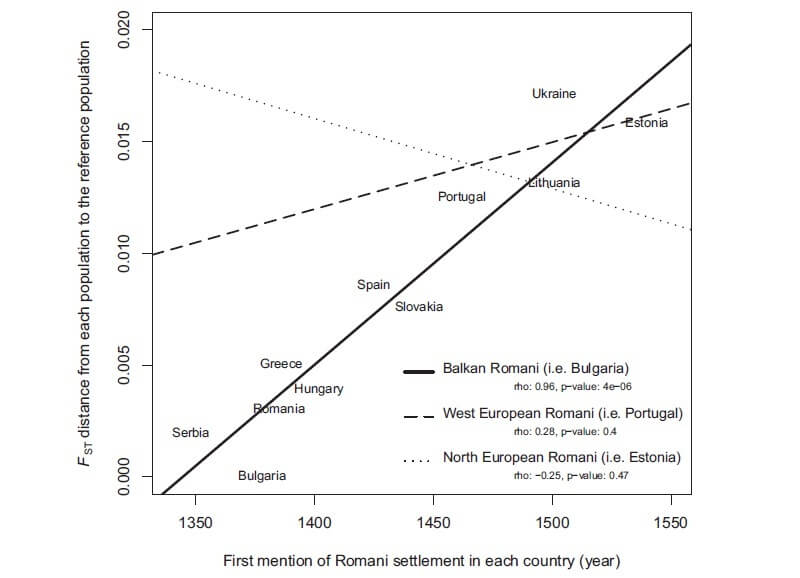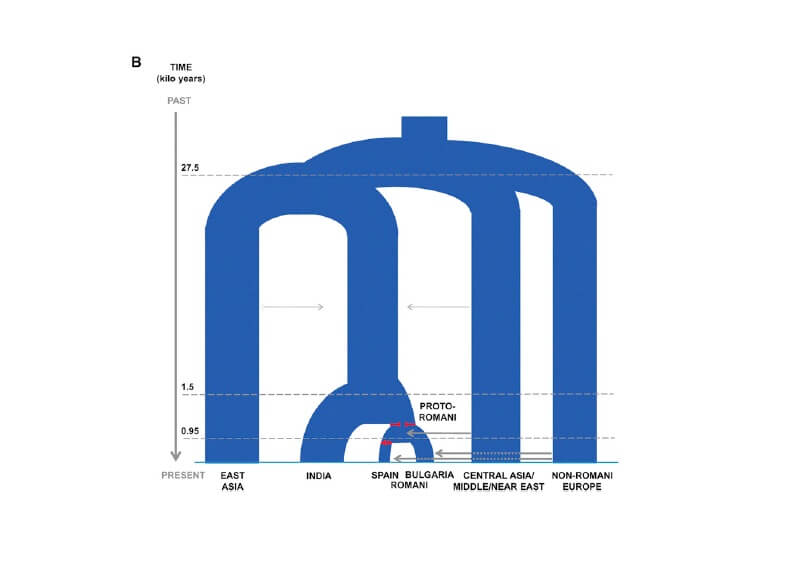🇵🇰 Pakistan & India 🇮🇳
the Romani diaspora
Gipsy, Gitanos, Cigan,
Zigeuner, Țigani…
Reconstructing the Population
History of European Romani
from Genome-wide Data
The Romani (GYPSIES), the largest European minority group with approximately 11 million people, constitute a mosaic of languages, religions, and lifestyles while sharing a distinct social heritage. Linguistic and genetic studies have located the Romani origins in the Indian subcontinent. However, a genome-wide perspective on Romani origins and population substructure, as well as a detailed reconstruction of their demographic history, has yet to be provided.
Our analyses based on genome-wide data from 13 Romani groups collected across Europe suggest that the Romani diaspora constitutes a single initial founder population that originated in north/northwestern India thousand years ago. Our results further indicate that after a rapid migration with moderate gene flow from the Near or Middle East, the European spread of the Romani people was viat he Balkans starting w0.9 kya. The strong population substructure and high levels of homozygosity we found in the European Romani are in line with genetic isolation as well as differential gene flow in time and space with non-Romani Europeans. Overall, our genome-wide study sheds new light on the origins and demographic history of European Romani.
Results &
Discussion
Previous studies analyzing the fine-scale genetic substructure of Europeans did not include the Romani, even thoughthey are the largest minority group in Europe.
Furthermore,the location, dating, and magnitude of their suggested out of-India diaspora, as well as their relationships with other populations, remain elusive. To address these issues, we studied the genome-wide diversity of the Romani people byanalyzing w800,000 single nucleotide polymorphisms (SNPs) using the Affymetrix 6.0 platform in 152 individuals from 13 Romani groups from eastern, western, and northern parts of Europe.
European Romani Genetic Diversity in the Worldwide Context First, we explored the genetic relationships of the European Romani with other worldwide populations using previously published genome-wide data sets (4,587 individuals and 51, 328 shared SNPs; see the ‘‘Reference datasets’’ section in Supplemental Experimental Procedures). In a first classical p < 10216, after exclusion of European Romani; Figure S1F.
European Romani show a lower frequency of the main ancestral component in Indians (dark blue) relative to populations from Central Asia and Pakistan (28% versus47%, p < 10216, Mann-Whitney test), and higher than Caucasus, Middle East and non-Romani European populations(28% versus 9%, p < 10216, Mann-Whitney test).
This result would suggest that the origin of the European Romani could be located in Central or South Asia (Pakistan and India). Notably, the main ancestry component present in Middle Easterners at k = 3 (Figure 2C,in dark green) shows the lowest average in the European Romani, followed by the Indian populations (3.6% and 6.3%,respectively). This result may indicate a low genetic contribution to the European Romani from the Near or Middle East.
See the entire study 360 °


